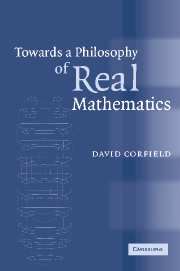PART I - HUMAN AND ARTIFICIAL MATHEMATICIANS
Published online by Cambridge University Press: 22 September 2009
Summary
Future philosophers may find it surprising that so few analytic philosophers, especially those who work at the formal end of the spectrum, have troubled themselves to converse with practitioners of machine learning, seeing that both groups convey their ideas about knowledge and inference within logical systems. Mathematical reasoning has, of course, been seen as the paradigm case for this treatment, so it is interesting to read Seymour Papert, a prominent Artificial Intelligence researcher, accuse philosophers of working with:
a projection of mathematics which greatly exaggerates its logical face much as the Mercator projection of the globe exaggerates the polar regions so that on the map northern Greenland becomes much more imposing than equatorial Brazil.
(Papert 1978: 107)One reason for my interest in computer assisted mathematics is that it offers us our best chance of perceiving what is lacking in such a projection.
Theorem proving, conjecturing and concept formation make up the three principal components of mathematical research. The brilliant observation of Lakatos, argued through the length of his famous dialogue, Proofs and Refutations, was that these components are thoroughly interwoven. He was right. Mathematicians perform these activities simultaneously – while clarifying a concept they notice a property which looks like it may hold for all of some class of objects, and while trying to prove that this is so, they find that it pays to introduce conceptual distinctions between elements of that class.
- Type
- Chapter
- Information
- Towards a Philosophy of Real Mathematics , pp. 35 - 36Publisher: Cambridge University PressPrint publication year: 2003



